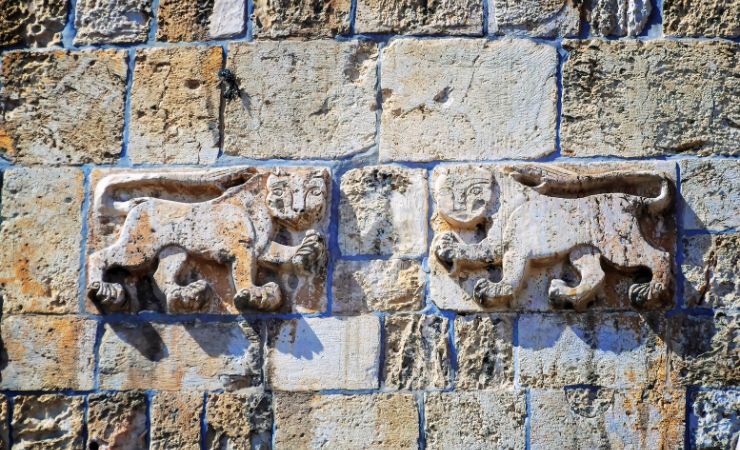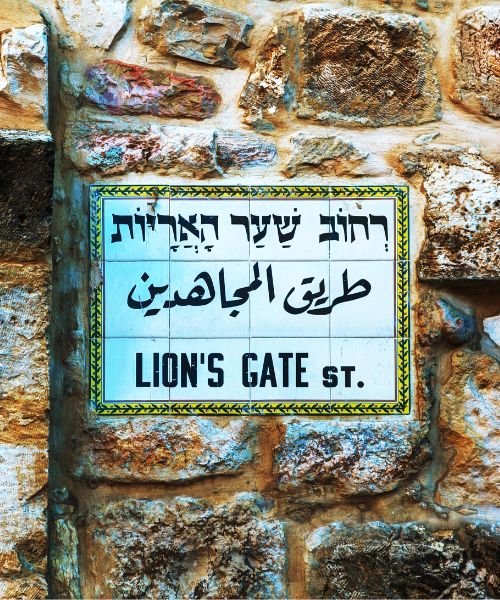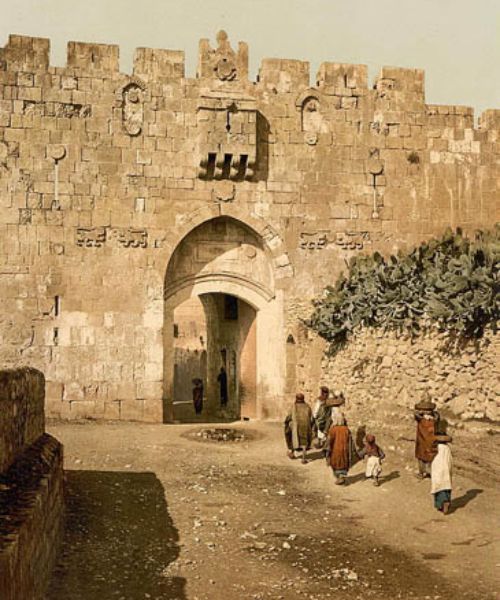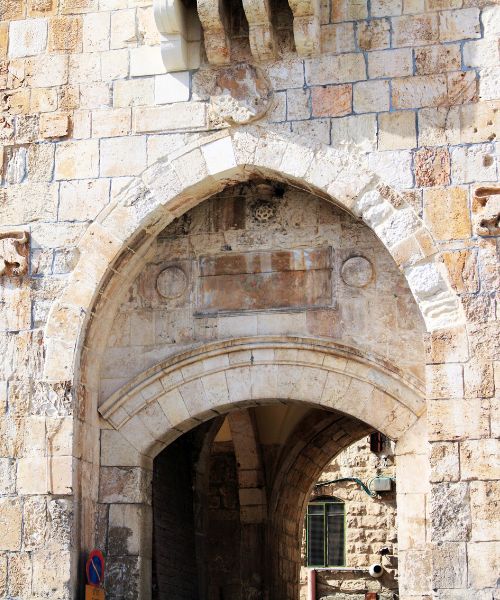Lion's Gate: The Via Dolorosa Starts Here
Introduction
The Lion’s Gate stands as a pivotal entrance to Jerusalem’s Old City, marking the beginning of the Via Dolorosa. Through this gate, countless pilgrims have embarked on the revered path, retracing the steps of Jesus during his final hours.
Location
Situated in the eastern part of the Old City, the Lion’s Gate provides direct access to the Muslim Quarter. Its location near the Mount of Olives and its many churches (such as Dominus Flevit, the Church of Ascention, the Virgins Mary’s Tomb, and Pater Noster), makes it a significant point of entry for many pilgrims and visitors.

Historical Context
The Lion’s Gate is one of the seven open gates leading into the Old City of Jerusalem.
The gate has various names reflecting its rich history and significance. In Arabic, it’s known as “Bab Sitna Mariam” due to its proximity to a Christian site indicating the burial location of Mary, mother of Jesus. Christians named it “Stephen’s Gate” after the first Christian martyr, believed to have been stoned near this gate. The current name was given at the time of the Ottoman Sultan Suleiman who built the Old City’s walls.
The Lion’s gate we see today was constructed in 1538/9. Legend has it that Suleiman had the gate adorned with lion carvings after a dream where he was threatened by lions for not fortifying Jerusalem. It is believed that these carvings had been taken from an older building associated with the Mamluk ruler Baibars, whose heraldic symbol was a lion (or cheetah). The gate’s construction was part of Suleiman’s larger project to rebuild and fortify the walls of Jerusalem, ensuring its protection and grandeur.
The Lion’s Gate is the starting point of the Via Dolorosa. On the Sunday before Easter, Christians commemorate Jesus’ journey by starting at the Mount of Olives. This day is known as “Palm Sunday.” Devotees participate in processions that begin at the Mount of Olives and proceed through the Lion’s Gate into the ancient city.
The Lion’s gate is important to the modern history of the State of Israel. In June 1967, IDF paratroopers used this gate to access the Temple Mount. After a 19-year period when the old city was under Jordanian control, Jewish settlements were re-established there. Near the base of the wall, there’s a Muslim cemetery. It was built next to the Temple Mount, a site revered in Islam, because of the Islamic belief in the Day of Judgement and the anticipated resurrection set to occur there.



Architecture of the Lion's Gate
Lion Embossments: The gate’s most distinctive feature is the lion embossments on both sides. Most historians agree that these embossments might have been taken from an older structure associated with the Mamluk Sultan Baibars, whose emblem was a lion (or cheetah). The integration of these carvings into the gate’s structure is tied to a legend involving Sultan Suleiman’s dream, where he was threatened by lions for neglecting the protection of Jerusalem.
Inscriptions and Decorations: Above the lion embossments, the gate is adorned with intricate decorations. Flowers and arches are embossed between the embrasures, and an inscription commemorates the construction of the city’s wall by Suleiman the Magnificent.
Mashikoli Terrace: A unique feature of the gate is the upper terrace known as “Mashikoli.” This terrace allowed guards to observe the wall’s outline and, in times of siege, to pour hot oil or other deterrents on intruders.
Sources and Additional Reading
Wikipedia – Lion’s Gate
iTravelJerusalem – Lion’s Gate
Nearby Sites
- Via Dolorosa: The path believed to be taken by Jesus during his final hours.
- Mount of Olives: A significant religious site with panoramic views of the Old City.
- Tomb of the Virgin Mary: A Christian tomb believed to be the burial place of Mary, mother of Jesus.
- Church of All Nations: Also known as the Basilica of the Agony, it’s a Roman Catholic church located at the foot of the Mount of Olives.



